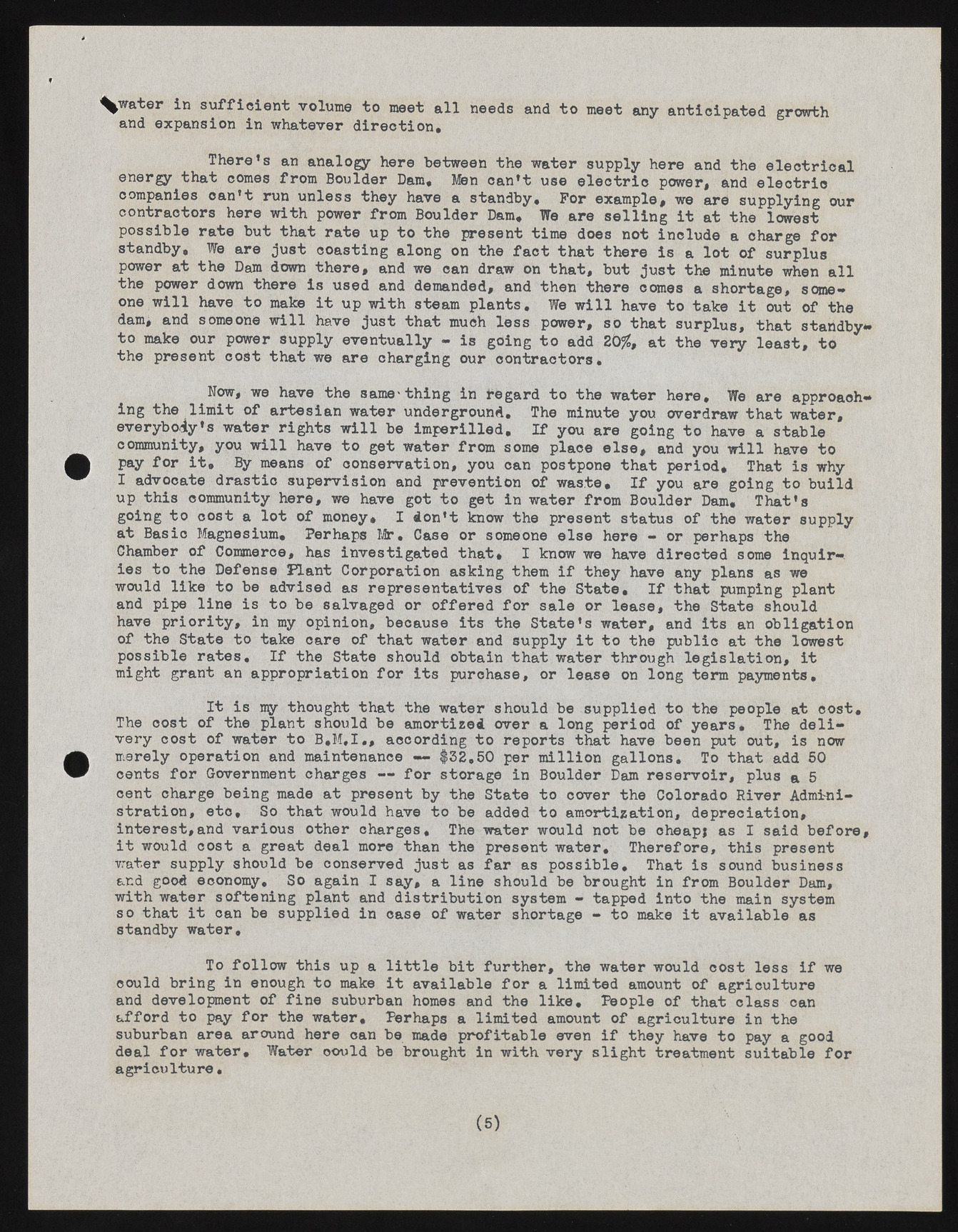Copyright & Fair-use Agreement
UNLV Special Collections provides copies of materials to facilitate private study, scholarship, or research. Material not in the public domain may be used according to fair use of copyrighted materials as defined by copyright law. Please cite us.
Please note that UNLV may not own the copyright to these materials and cannot provide permission to publish or distribute materials when UNLV is not the copyright holder. The user is solely responsible for determining the copyright status of materials and obtaining permission to use material from the copyright holder and for determining whether any permissions relating to any other rights are necessary for the intended use, and for obtaining all required permissions beyond that allowed by fair use.
Read more about our reproduction and use policy.
I agree.Information
Digital ID
Permalink
Details
More Info
Rights
Digital Provenance
Publisher
Transcription
^water in sufficient volume to meet all needs and to meet any anticipated growth and expansion in whatever direction. There’s an analogy here between the water supply here and the eleotrical energy that comes from Boulder Dam, Men can’t use electric power, and electric companies can’t run unless they have a standby. For example, we are supplying our contractors here with power from Boulder Dam, We are selling it at the lowest possible rate but that rate up to the present time does not include a charge for standby. We are just coasting along on the fact that there is a lot of surplus power at the Dam down there, and we can draw on that, but just the minute when all the power down there is used and demanded, and then there comes a shortage, some-* one will have to make it up with steam plants. We will have to take it out of the dam, and someone will have just that much less power, s o that surplus, that standby* to make our power supply eventually - is going to add 2b%, at the very least, to the present cost that we are charging our contractors. Now, we have the same-thing in hegard to the water here. We are approaching the limit of artesian water underground. The minute you overdraw that water, everybody’s water rights will be imperilled. If you are going to have a stable community, you will have to get water from some place else, and you will have to pay for it. By means of conservation, you can postpone that period* That is why I advocate drastic supervision and prevention of waste. If you are going to build up this community here, we have got to get in water from Boulder Dam, That's going to cost a lot of money, I don’t know the present status of the water supply at Basic Magnesium, Perhaps Mr. Case or someone else here - or perhaps the Chamber of Commerce, has investigated that, I know we have directed some inquiries to the Defense Plant Corporation asking them if they have any plans as we would like to be advised as representatives of the State, If that pumping plant and pipe line is to be salvaged or offered for sale or lease, the State should have priority, in my opinion, because its the State's water, and its an obligation of the State to take care of that water and supply it to the public at the lowest possible rates. If the State should obtain that water through legislation, it might grant an appropriation for its purchase, or lease on long term payments. It is my thought that the water should be supplied to the people at cost. The cost of the plant should be amortized over a long period of years. The delivery cost of water to B,M,I«, according to reports that have been put out, is now merely operation and maintenance — $32.50 per million gallons. To that add 50 cents for Government charges — for storage in Boulder Dam reservoir, plus a 5 cent charge being made at present by the State to cover the Colorado River Administration, etc. So that would have to be added to amortization, depreciation, interest,and various other charges. The water would not be cheap! as I said before, it would cost a great deal more than the present water. Therefore, this present water supply should be conserved just as far as possible. That is sound business and good economy. So again I say, a line should be brought in from Boulder Dam, with water softening plant and distribution system - tapped into the main system so that it can be supplied in case of water shortage - to make it available as standby water. To follow this up a little bit further, the water would cost less if we could bring in enough to make it available for a limited amount of agriculture and development of fine suburban homes and the like. People of that class can afford to pay for the water. Perhaps a limited amount of agriculture in the suburban area around here can be made profitable even if they have to pay a good deal for water. Water could be brought in with very slight treatment suitable for agriculture. (5)

